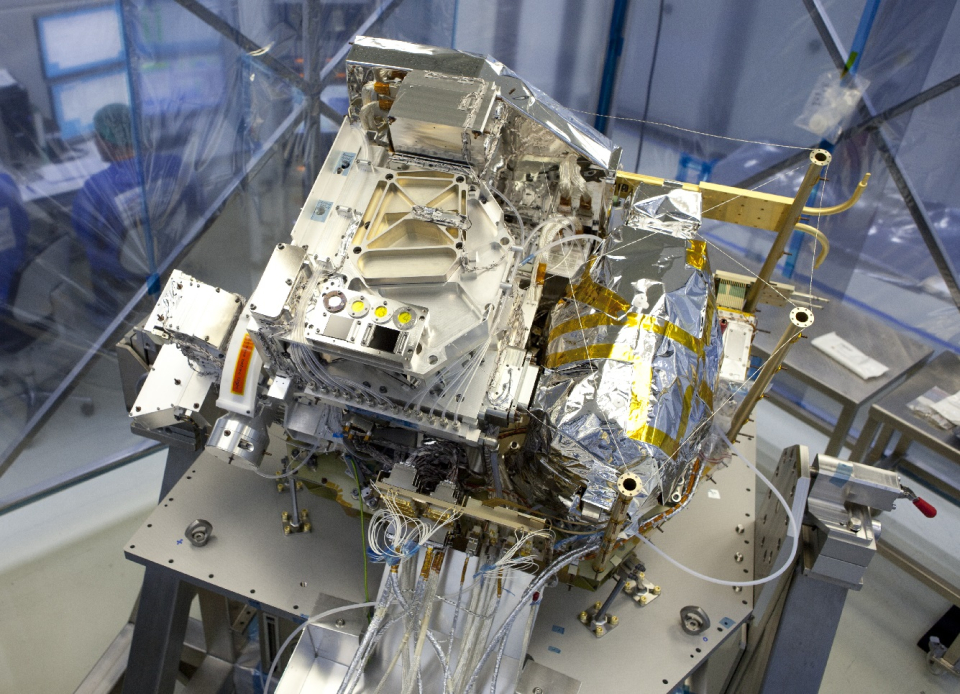The main objective of the Copernicus Sentinel-5P mission is to perform atmospheric measurements with high spatio-temporal resolution, to be used for air quality, ozone & UV radiation, and climate monitoring & forecasting.
The mission consiss of one satellite carrying the state-of-the-art TROPOMI instrument to map a multitude of trace gases, which affect the air we breathe and therefore our health and our climate. The instrument provides high-resolution measurements of key atmospheric pollutants such as ozone, nitrogen dioxide, sulfur dioxide, methane, carbon monoxide and aerosols.
Sentinel-5P was launched on 13 October 2017 from the Plesetsk Cosmodrome in northern Russia on a Rockot launch vehicle.

TROPOMI instrument
Sentinel-5P instrumentation
The TROPOMI instrument measures daily, on the global scale and at the unprecedented horizontal resolution of 7 x 3.5 km², atmospheric composition data related to air quality, ozone, climate change and volcanic hazards. Main characteristics of the instrument:
- Type: passive grating imaging spectrometer
- Configuration: Push broom staring (non-scanning) in nadir viewing
- Swath width: 2,600 km
- Spatial sampling: 7x7 km²
- Spectral: 4 spectrometers, each electronically split in two bands (2 in UV, 2 in VIS, 2 in NIR, 2 in SWIR)
- Design lifetime: 7 years
| Satellite | Sentinel-5P |
| Launch Date | 13 October 2017 |
| End Date | |
| Status | Operational |
| Orbit type | Polar, sun-synchronous |
| Altitude | 830 km |
| Orbit inclination | 98.71° |
| Orbit period | 101 minutes |
More on Copernicus
The Copernicus Programme is an Earth observation initiative that forms a crucial part of the European Union Space Programme. Managed by the European Commission in collaboration with various European organizations such as the European Space Agency (ESA), the European Organisation for the Exploitation of Meteorological Satellites (EUMETSAT) and the European Centre for Medium-Range Weather Forecasts (ECMWF), Copernicus aims to establish a comprehensive Earth observation capacity that is global, continuous, autonomous, and of high quality. The primary objective of the programme is to provide accurate, timely, and easily accessible information to improve environmental management, understand and mitigate the impacts of climate change, and ensure civil security.
Click here to visit our dedicated Copernicus page